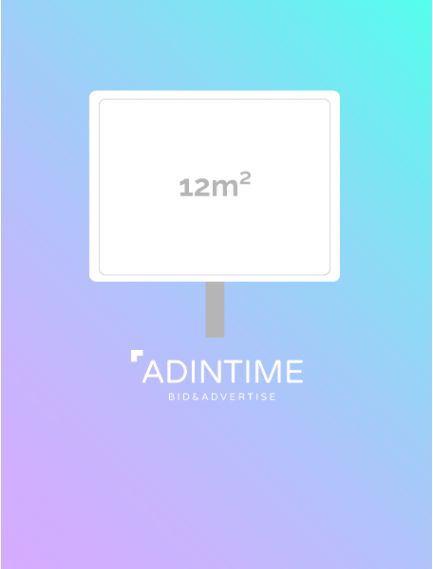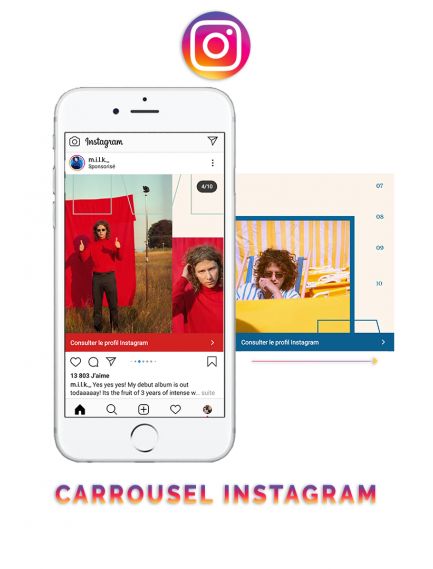How to track a marketing campaign? Tracking a marketing campaign is essential to evaluate its effectiveness and optimize results. In this article, we will answer this question with the best practices for successfully tracking a marketing campaign. We will cover key steps, from initial objectives to result analysis, including selecting KPIs and using analytics tools.
Article Summary: how to track a marketing campaign?
- Understanding your campaign goals
- Choosing the right KPIs to track your marketing campaign
- Using analytical tools to track a marketing campaign
- Tracking the marketing campaign and analyzing results
- Writing the campaign report
Before launching a marketing campaign, it's crucial to define clear and specific objectives. These goals will serve as the basis for evaluating the advertising campaign's success once it's completed. Objectives may include increasing sales, enhancing brand awareness, lead generation, etc. The more specific the objectives, the easier it will be to measure the campaign's results.
Understanding your campaign goals
Before setting up the campaign, let's clarify the main objectives of a marketing campaign. There are three main goals:
- Traffic: Increase the number of visitors to your website or application.
- Awareness: Enhance brand recognition among your target audience.
- Conversion: Encourage desired actions by users, such as purchases, registrations, or downloads. Ultimately, increasing your revenue.
- Drive to Store: Campaigns aiming to increase physical store traffic.
In 2024, launching an advertising campaign is just the beginning of a marketing strategy. Rigorous monitoring of the latter is essential to understand its impact and optimize future initiatives. To do this, you must identify and track the right key performance indicators (KPIs).
>>> How much does an advertising campaign cost?
Choosing the right KPIs to track your marketing campaign
Once the objectives are defined, it's important to choose the key performance indicators (KPIs) that will measure the success of the campaign.
KPIs may vary depending on the campaign objectives and the advertising media used. They may include measures such as conversion rate, return on investment (ROI), website traffic, social media engagement, etc. It's essential to select relevant KPIs to assess campaign performance.
1. Awareness goal
TV and DOOH Campaigns:
- Recall Rate: Measures consumers' ability to remember your brand after seeing the ad. This can be evaluated through post-campaign surveys.
- Aided Recognition: Assesses brand recognition among a given list, often used in surveys.
- Direct Traffic Increase: Monitor direct visits to the brand's website during and after the campaign to identify traffic spikes.
- Brand Search Volume: Analyze search engine trends to detect an increase in specific brand queries.
2. Traffic goal
Digital Campaigns:
- Website Visits: Total number of visits to the website from various sources.
- Unique Users: Number of distinct individuals who visited your site, to identify the actual reach of the advertising campaign.
- Pages per Session: Average number of pages viewed per session, indicating visitor engagement.
- Average Session Duration: Time spent by a visitor on the site, reflecting interest in the content.
- Click-Through Rate (CTR): Number of clicks on your campaign.
3. Conversion goal
All Media:
- Conversion Rate: Percentage of visitors who complete the desired action (purchase, registration, download, etc.) divided by the total number of visitors.
- Cost per Acquisition (CPA): Total campaign cost divided by the number of conversions, measuring efficiency in terms of expenses.
- Customer Lifetime Value (CLV): Estimate of the revenue a customer will generate throughout their relationship with the brand, important for evaluating long-term ROI.
4. Drive to Store goal
All Media:
- Uplift in Store Visits: Increase in the number of people visiting a physical store attributable to the campaign.
- Drive-to-Store Conversion Rate: Percentage of campaign targets who actually visit the store.
- Uplift in Revenue: Increase in store revenue attributable to the campaign, compared to a reference period.
- Cost per Visit (CPV): Total campaign cost divided by the total number of store visits generated.
- Engagement Rate with Campaign Material: Consumer interaction rate with campaign elements designed to encourage store visits (e.g., QR codes, coupons).
- Number of Coupons Used or Promo Codes: Quantity of coupons or promotional codes redeemed in-store as part of the campaign.
- Attraction Rate: Comparison of the number of new customers attracted to the store through the campaign versus the total number of visitors.
* Refers to the increase in the number of people visiting a physical store following a marketing campaign. For example, if a drive-to-store campaign is launched, uplift would be measured by comparing the number of store visits during and after the campaign to a reference period before the campaign.
Using analytical tools to track a marketing campaign
To effectively track a marketing campaign, it's important to use analytical tools that collect data on campaign performance. These tools provide valuable insights into campaign performance, such as clicks, impressions, conversions, etc., and allow real-time tracking and evaluation of results.
Tracking and analysis tools
- Google Analytics: Provides insights into traffic, user behavior, and conversions. Allows tracking of specific goals and conversion funnels. It's a must-have for performance analysis.
- TV-specific Tools like Realytics: This tool provides analyses on the impact of TV campaigns on online traffic and brand awareness.
- Social Media Management Platforms: For social campaigns, tools like Hootsuite or Sprout Social can help track engagement, brand mentions, and audience. Some platforms already have their own KPI analysis spaces.
>>> To learn more about campaign management tools, visit here.
Measuring Drive to Store with specific technologies
- Bluetooth and Wi-Fi-based Solutions: It's possible to use in-store devices to detect customers' smartphones' presence and link them to digital advertising campaigns.
- GPS Tracking: Analyzing location data to confirm store visits following ad exposure.
- CRM Onboarding: Matching in-store transactions to customer profiles to establish a direct link between visits and marketing actions.
Tracking the marketing campaign and analyzing results
Once you've calibrated your campaign well, with the right choice of KPIs, you need to move on to the tracking and analysis stage of your results.
It's important to track the campaign throughout its duration. This allows you to identify performance and, most importantly, possible optimizations to maximize its performance. Regular monitoring also helps identify emerging trends or issues, thus enabling quick and effective troubleshooting.
Once the campaign is complete, it's time to analyze the results to evaluate its success. You can compare the results achieved against the set objectives and identify what worked as well as areas for improvement. Results analysis provides valuable insights for future campaigns and optimizes marketing and advertising efforts.
Writing the campaign report
To have a clear view of the campaign, we recommend creating a campaign report. It will gather all the important information about the campaign and its results.
It should include a thorough analysis of the campaign performance, key insights, lessons learned, and recommendations for future campaigns. A well-written report documents the campaign results to improve future campaigns.
To assist you in creating your campaign report, here is an example:




.png)
%20(2).png)
%20(3).png)
%20(4).png)
%20(5).png)
%20(6).png)
%20(7).png)
%20(8).png)
%20(9).png)
%20(10).png)
 Top 30 best ads musics
Top 30 best ads musics
 The influence of advertising on purchasing behavior
The influence of advertising on purchasing behavior
 This Year Marketing Calendar
This Year Marketing Calendar
 Top 30 best ads 2021 in France
Top 30 best ads 2021 in France
 Top of the most listened podcasts in France
Top of the most listened podcasts in France
 How to prepare your advertising campaigns for Christmas?
How to prepare your advertising campaigns for Christmas?
 The top 20 ad films of the year
The top 20 ad films of the year
 Example of a unique selling proposition
Example of a unique selling proposition
 Advertising storyboard: how to structure your campaigns
Advertising storyboard: how to structure your campaigns
 Advertising: tips to make a lasting impression
Advertising: tips to make a lasting impression











